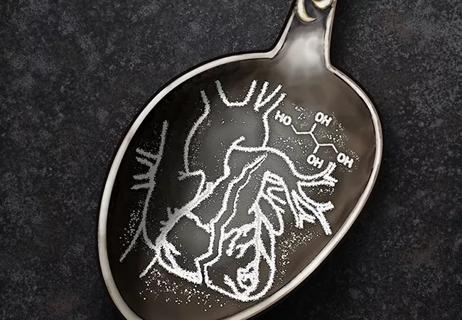A PI’s perspectives on ABSORB III interim results

At first blush, recently reported interim results from the ongoing ABSORB III clinical trial may seem underwhelming: One year after implantation, an investigational everolimus-eluting bioresorbable vascular scaffold was statistically noninferior to a standard metallic everolimus-eluting stent.
Advertisement
Cleveland Clinic is a non-profit academic medical center. Advertising on our site helps support our mission. We do not endorse non-Cleveland Clinic products or services. Policy
Yet the results are not surprising to the multicenter trial’s investigators, who see the promise of bioresorbable scaffolds as most likely to manifest over the longer term.
“After an initial healing phase, patients implanted with permanent stents have a 2 percent per year risk of thrombosis or restenosis,” says Cleveland Clinic interventional cardiologist Stephen Ellis, MD, who serves as a co-principal investigator of ABSORB III. “That’s 2 percent a year that, as far as we can tell, may go on forever. So the payoff from bioresorbable scaffolds, if there will be one, is going to be late.”
Development of bioresorbable vascular scaffolds was driven by the reasoning that if the persistent vascular stent is to blame for late target lesion failure in recipients of standard metallic stents, then a dissolvable scaffold should pay off over the long term. The idea has led to a proliferation of drug-eluting bioresorbable scaffolds, among which the product being tested in ABSORB III — Abbott’s Absorb™ BVS system (Absorb) — is a frontrunner, receiving a near-unanimous vote in support of marketing approval from an FDA advisory committee on March 15.
The ABSORB III trial, which began enrollment in 2013, compares the Absorb bioresorbable scaffold with Abbott’s permanent XIENCE™ stent (Xience). Like Absorb, Xience delivers everolimus to the implantation site to prevent restenosis, but unlike Absorb, its cobalt-chromium walls remain intact.
The study randomized 2,008 patients with angina (stable or unstable) on a 2:1 basis to receive either Absorb or Xience. The trial is continuing through 2019, but the analysis recently published in the New England Journal of Medicine found the bioresorbable scaffold to be within the prespecified margin for noninferiority versus the permanent stent one year after implantation.
Advertisement
Specifically, it found one-year target-lesion failure rates of 7.8 percent for the Absorb group and 6.1 percent for Xience group (P = .007 for noninferiority; P = .16 for superiority). There were likewise no significant between-group differences in rates of cardiac death, target-vessel myocardial infarction or ischemia-driven target-lesion revascularization.
Despite meeting its primary noninferiority outcome, the analysis found a slightly higher risk of device thrombosis in the Absorb group than in the Xience group (1.5 percent vs. 0.7 percent; P = .13).
“The magnitude was a little more than we would like, but it was certainly not totally surprising,” Dr. Ellis says. He hypothesizes that the elevated risk could be due to the Absorb scaffold’s thickness.
Made of polylactide, Absorb (at 157 microns) is about twice as thick as a typical second-generation permanent stent. This allows it to provide support similar to that from a metallic stent. Since ABSORB III began, Abbott has developed a thinner 100-micron version of a bioresorbable scaffold.
Dr. Ellis notes that he and his ABSORB III coinvestigators expected an elevated risk of thrombosis before the scaffold dissolved and that this may be offset by a reduction in target-lesion failure in years to come. “That’s the only penalty we think we’re going to have to pay,” he says. “We’re really looking carefully to see what happens to patients as they go beyond two to three years.”
The one-year analysis also provided insights that could help match the right patients to the right device. Dr. Ellis explains that Absorb seems to perform best when the cardiac arteries being treated are moderate to large in size — between about 2.5 and 3.75 mm in diameter.
Advertisement
“For the roughly 20 percent of patients in this study whose arteries were smaller than that, the Absorb results were not as good,” he notes.
Analyses are also underway to determine the best way to implant Absorb. “Minimizing early risk may require more meticulous attention to technique,” he says.
Prospects for Absorb’s marketing approval were bolstered by the March 15 FDA advisory committee vote of 9-0 (with one abstention) in support of approval, although the FDA is not required to follow recommendations of its advisory panels. The product is already commercially available in more than 30 countries across Asia, Europe and Latin America.
Many other companies are working on bioresorbable scaffolds, at least one of which is approximately as thin as the new 100-micron Absorb scaffold, notes Dr. Ellis, who is a consultant to Abbott and all major U.S. stent developers. “But in terms of patient numbers and duration of follow-up, Absorb is way out in front,” he says.
Abbott has been following another group of about 100 patients who were implanted with the Absorb scaffold five years ago. The rate of adverse events does seem to fall off after two to three years, Dr. Ellis says, “but there aren’t enough patients to say that with any certainty.”
He says he’ll be watching upcoming ABSORB III results closely to see if Absorb’s early thrombosis risk will be outweighed by long-term benefits in terms of reduced target-lesion failure and related outcomes.
Image courtesy of Abbott Vascular. All rights reserved.
Advertisement
Advertisement

Study authors urge reevaluation of the sweetener’s safety designation by food regulators

Surprise findings argue for caution about testosterone use in men at risk for fracture

Findings support emphasis on markers of frailty related to, but not dependent on, age
![GettyImages-1252287413 [Converted]](https://assets.clevelandclinic.org/transform/StoryPanel/350804b2-f1e4-4d97-a277-9629cf45af3e/23-HVI-4120348_redlining_650x450_jpg?w=3840&q=75)
Large database study reveals lingering health consequences of decades-old discrimination

Additional analyses of the two trials presented at 2023 ESC Congress

Prospective SPIRIT-HCM trial demonstrates broad gains over 12-month follow-up

An ACC committee issues recommendations to accelerate sluggish progress

Review of our recent experience shows it’s still a safe option